Risk Management
Introduction
Since the 2008 financial crisis, financial institutions have been compelled to adopt more comprehensive and sophisticated risk management systems. This risk management function has also grown in importance for MUFG as a global bank with subsidiaries spanning the commercial, trust and investment banking sectors.
MUFG aims to strengthen its group risk management through the diffusion of a Risk Culture which is unified, global and preventive in its approach. Our goal is effective risk governance which is consistent across regions, subsidiaries and the holding company.
The new Risk Appetite Framework provides a guideline for effective risk management to support our business strategy and will strengthen the Group’s overall risk-return management.
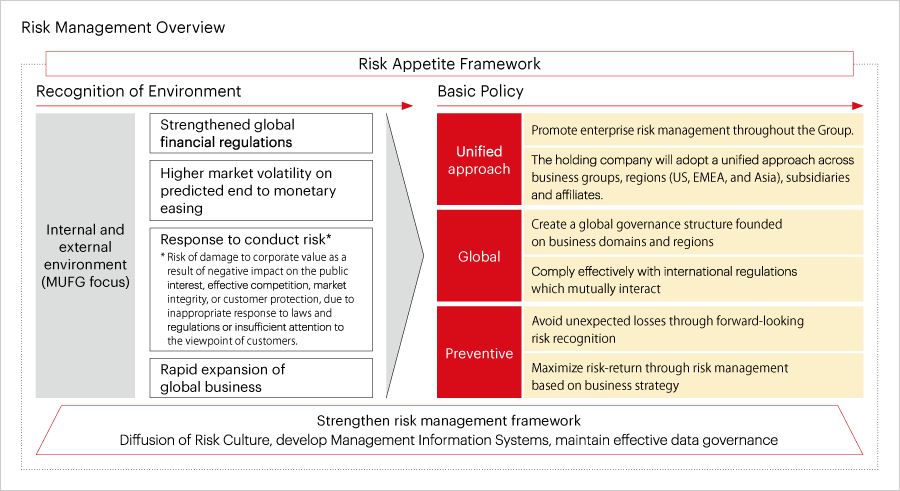
Risk Appetite Framework
The Risk Appetite Framework aims to clarify MUFG’s risk appetite (types and amount of risks that it is willing to accept) as it works to achieve its business strategy and financial plan. The framework is designed to increase management transparency and generate more profit opportunities in an environment where risk is properly controlled.

Risk Appetite Framework Management Process
In the formulation and execution of its business strategy and financial plan, MUFG will set the appropriate level of risk appetite and proceed to monitor and analyze risk volume. The process to set and manage risk appetite is set out below. In order to effectively implement the Risk Appetite Framework, risk evaluation and verification procedures (capital allocation system, stress tests, Top Risk management) will be applied at every stage of the management planning process.
Risk Appetite Setting and Management Process
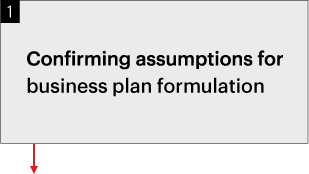
Before formulating the overall business plan, assess pressure points for business strategy and financial and capital operations based on the internal and external environment
- ·Future balance sheet simulation based on macroeconomic scenarios
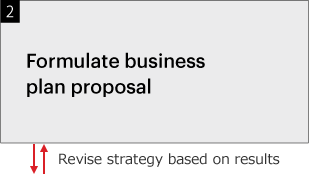
In pursuing management’s vision, formulate a business plan proposal based on business strategy, financial plan and risk appetite.
- ·Clarify risks to be accepted and risks to be avoided on the basis of Risk Culture
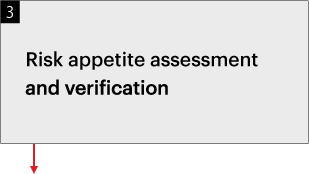
The risk management divisions will mainly assess the appropriate level of risk appetite. The strategy proposal will be amended if the stress tests indicate that the maximum level of acceptable risk will be exceeded.
- ·Evaluation of strategy profitability and soundness based on stress tests
- ·Evaluation of risks associated with the implementation of business strategies (quantitative, qualitative)
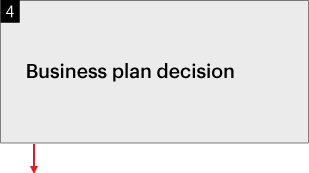
The Executive Committee and Board of Directors discuss and subsequently make decisions based on an integrated view of business strategy, the financial plan and risk appetite.
- ·On the basis of the capital allocation system, capital is allocated to subsidiaries and operational divisions in accordance with the level of risk.
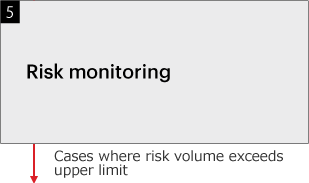
The risk management divisions of the holding company and subsidiaries monitor risk volume in relation to allocated capital and risk appetite.
- ·Forward-looking valuation of internal and external environment based on Top Risk management
- ·Assess overall risk for individual business strategy based on monitoring of risk appetite results and predictive control
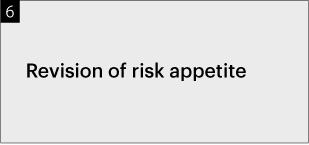
The risk appetite plan will be revised if monitoring reveals that risk appetite and actual levels of risk diverge, or if environmental factors increase the level of risk.
- ·Stress tests may be conducted again in order to reset risk appetite.
Enterprise Risk Management
MUFG makes every effort to recognize the risks that emerge in the course of business execution, assessing them according to uniform criteria. Enterprise risk management is then conducted while maintaining business stability and striving to maximize shareholder value. Enterprise risk management is a dynamic approach, promoting stable profits commensurate with risk as well as the appropriate allocation of resources.
Enterprise risk management is composed of three main strands: the capital allocation system, stress tests and Top Risk management.
(1)Capital allocation system
In this framework, latent losses associated with risk are converted to a required capital amount, and capital is then allocated across group companies and between different risk categories according to business strategy and the profit plan. The framework is intended to allow the appropriate distribution of capital throughout the Group as MUFG monitors to preserve financial soundness, evaluate capital adequacy versus risk, and judge impact on overall capital strategy.
(2)Stress tests
Stress tests for capital adequacy assessment
In formulating its business strategy, MUFG regularly assesses its internal capital adequacy through stress tests based on two perspectives: regulatory capital, based on capital adequacy regulations (Basel Ⅲ), and its own economic capital, based on internal risk assessment.
Stress tests analyze both the internal and external environment, and use three-year-period preventative scenarios.
Liquidity stress test
In liquidity stress tests, the impact of MUFG-specific or overall market stress on the balance sheet is assessed so as to implement MUFG’s business strategy and financial plan. Various options are examined to respond to shortterm fund outflows or long-term structural changes in the balance sheet with a view to ensuring there is no funding shortage.
(3)Top risk management
The potential losses that emerge from scenario analysis are classified as risks and then their relative importance is weighed according to degree of impact and probability (internal and external factors). The risks that need to be watched most closely over the next year are classified as Top Risks and a risk map is created to allow preventive risk management.
By identifying Top Risks, MUFG and its affiliates can discuss countermeasures to mitigate the potential impact and then respond dynamically when they actually emerge. As Top Risks are discussed Group-wide, including management, consistent risk recognition is maintained widely throughout the Group and effective solutions implemented. As an example, in the Top Risk report submitted to our Board of Directors via the Corporate Risk Management Committee in March 2015, “Risk of higher losses due to increase in long-term interest rates” was cited as a major Top Risk.
Establishment of Risk Committee
In enhancing its corporate governance and risk management, MUFG places a special emphasis on stakeholders who can view the Company from the outside. To that end, in 2013, the Company established the Risk Committee, composed of independent external directors and external specialists, which reports directly to the Board of Directors on Group-wide risk management matters.
Enhancing the Effectiveness of Risk Management
Effective risk management and a strong Risk Appetite Framework depend on a Risk Culture which enables meaningful discussion and clear communication throughout the Group.
Developing and diffusing a Risk Culture
MUFG defines a Risk Culture as the basic approach which specifies how to take risks and risk management for MUFG’s organizational and individual behaviors. This standard of conduct on risk taking is then spread throughout the Company. A Risk Culture is established for credit business, market business and overall business and then formulated in the Risk Appetite Statement. In order to share this Risk Culture throughout the Company, management issues regular strategic messages and schedules regular global meetings.

Risk Appetite Statement
The Risk Appetite Statement elucidates the Risk Appetite Framework which embodies MUFG’s attempts to achieve an integrated group strategy along with effective risk management. The Risk Appetite Statement contains an overview of the Risk Appetite Framework (basic policy and management process) as well as specific business strategies, financial plans and risk appetite details. A summary of the Risk Appetite Statement is distributed throughout the Group in an effort to spread the basic philosophy behind the Risk Appetite Framework.
